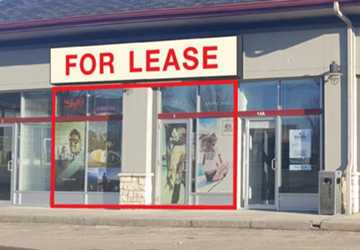Do You want to lease your commercial property? Preparing your property before its listing can make a world of difference. It'll be apparent to the right tenants and make the leasing process much more manageable.
Preparing your commercial property will appeal to good-quality tenants and allow you to maximize rents. When you do, you'll get more satisfaction from tenants and reduce the vacancy risk.

When leasing your commercial property, you want to ensure maximum returns on your investment. We have followed a systematic approach to help you prepare it.
This blog post guides you through four essential steps that will help you attract premium tenants and reap premier results.
Let's get into the process of preparing your commercial property for lease.
Proper preparation of your commercial property for lease can significantly impact your success as a landlord.
Adequate preparation of the property will guarantee tenancies for the long term, which, in effect, reduces vacancy and increases rental income.
An adequately prepared property appeals to potential tenants and lays the foundation for a good relationship between you, the landlord, and your tenant.
When tenants move into a well-maintained, clean space, they may take pride in the property and treat it respectfully.
Proper preparation also helps you avoid unwanted maintenance issues that might arise soon.; this means tackling repairs or necessary upgrades before leasing, which keeps your tenants happy and prevents expensive surprises for you down the line.
A well-prepared commercial property can command higher rental rates, and its value should generally increase over time.
You're right. It may take some effort initially, but trust me, it's well worth it in the long run.
Now that we've discussed why properly preparing your commercial property for lease is essential, let's discuss the practical steps you must take.
Conduct a thorough inspection before listing your property for lease to identify any necessary repairs and maintenance issues.
Fixing such problems upfront makes your property much more appealing to potential tenants.
You should start by inspecting the structure for any existing damages, such as cracks in the foundation or walls.
Your next step is to ensure that all plumbing, electrical, and HVAC systems are running correctly and efficiently.
It's equally important that your property meets the legal requirements of accessibility and safety. Doing so before a lease, you'll offer tenants a safe, comfortable place to stay.
It would help if you created an excellent first impression to draw potential tenants to your living or commercial space—in other words, your listing.
A properly maintained and clean property will also affect the leasing project timeline and leasing rate that applies to your space.
Start by cleaning the interior and exterior of the property until it's spotless, free from dirt, and free from any form of clutter.
Ensure the walls, doors, and trim are repainted with fresh coats to give the property a new look.
Remember to update the property's exterior, too. Improving its landscaping and curb appeal can make a big impression on prospective tenants.
Good lease terms will give you, the owner, the opportunity for lucrative returns while helping secure the appropriate commercial tenant by drawing them to lease.
When setting your rates, check the prevailing rental rate of similar units or spaces in the market.
You should review options such as offering flexible lease terms, reducing lease periods, or making the renewal clause more tenant-friendly. Your lease terms should be explicit about maintenance and repairs, and you should explain this clearly to the tenants.
By offering competitive lease terms, you can decrease the time your property lies vacant, increasing your rental income.
Feel free to strike a deal that's perfect for both you and your potential tenants, the principal participants in the lease.
Once your property is ready, the next step is to inform all the prospective tenants.

Attractive marketing techniques work well by tapping into a large population, which helps you fill the vacancy earlier.
Create beautiful and detailed property listings that describe your space's best features.
You should include high-quality photography and details such as square footage, amenities, and location.
To ensure a wider pool of tenants, use any available rental platforms online and leverage social media. Consider employing a real estate agent specializing in managing commercial properties to assist you with professional marketing and tenant screening.
By using targeted marketing strategies, you can attract good tenants for your vacant commercial property and reduce the length of the vacancy period.
Preparing your commercial property for lease should be ready when it should be prepared before it becomes vacant.
With proper planning, you can have your property ready in advance to attract the right tenant once it hits the market.
If your unit sits empty daily, you can lose a hundred dollars or more in rental income. So, start implementing these four strategies today, and you'll keep your vacancies shorter.
Preparing your property for lease means investing your time and effort, but trust me, the returns on this investment are guaranteed.
You can take the first of many victories by getting your property ready right now!
Q. What essential repairs must you complete before renting a commercial space?
Ans. Structural issues, plumbing, electrical, heating, and cooling systems, as well as the general safety and accessibility of the property, need to be addressed. All these will make the property more attractive to potential tenants.
Q. How do I know what to lease my commercial property for?
Ans. Research current local rental rates for similar properties in your local area. In doing this, you should consider location, size, amenities, and property condition.
Q. What marketing strategies are most effective for leasing commercial properties?
Ans. Post very elaborate rental advertisements on websites containing listings of properties and use very high-quality photos. Consider hiring a real estate agent specializing in commercial properties to help with professional marketing and tenant screening. Targeted marketing strategies can help you reach the right tenants quickly.